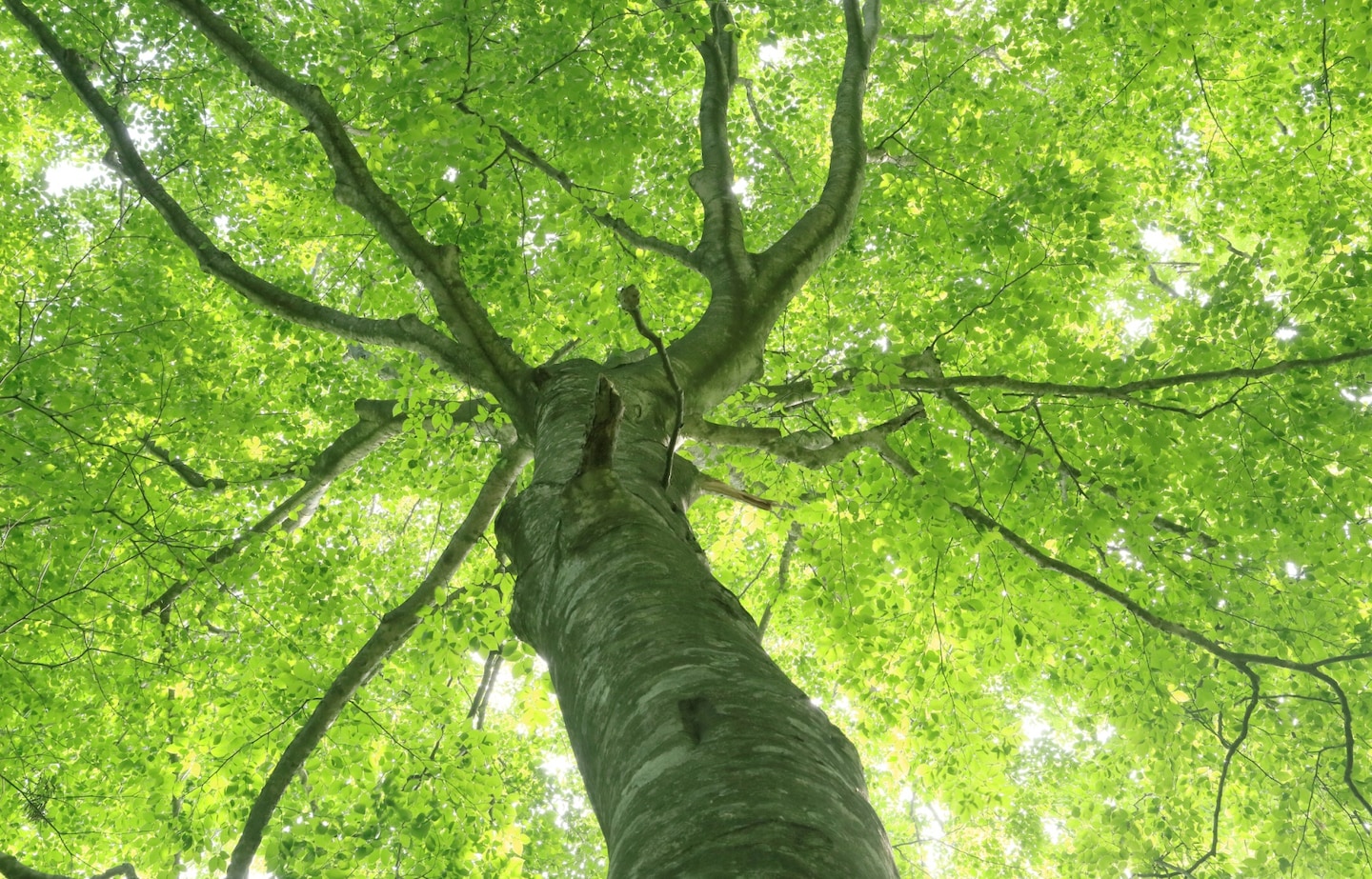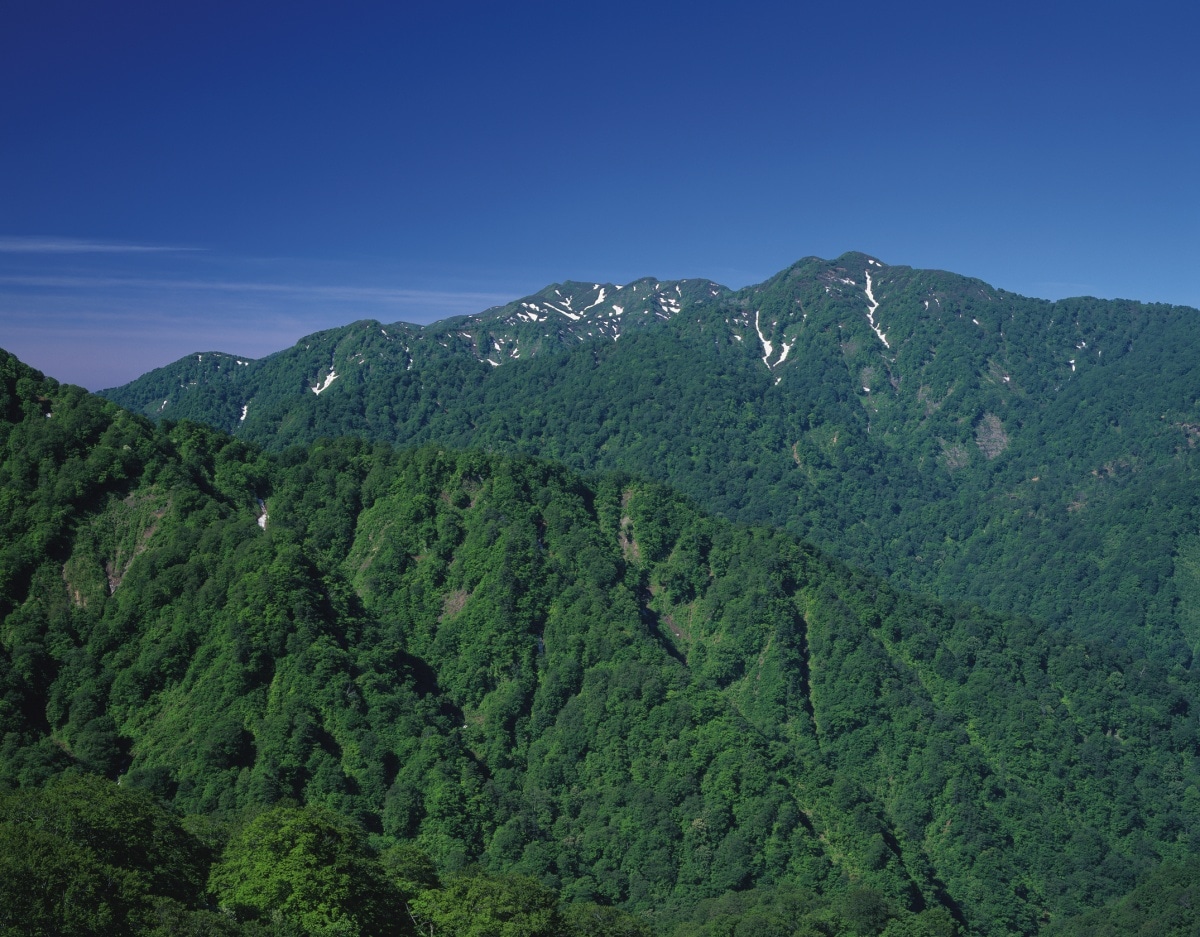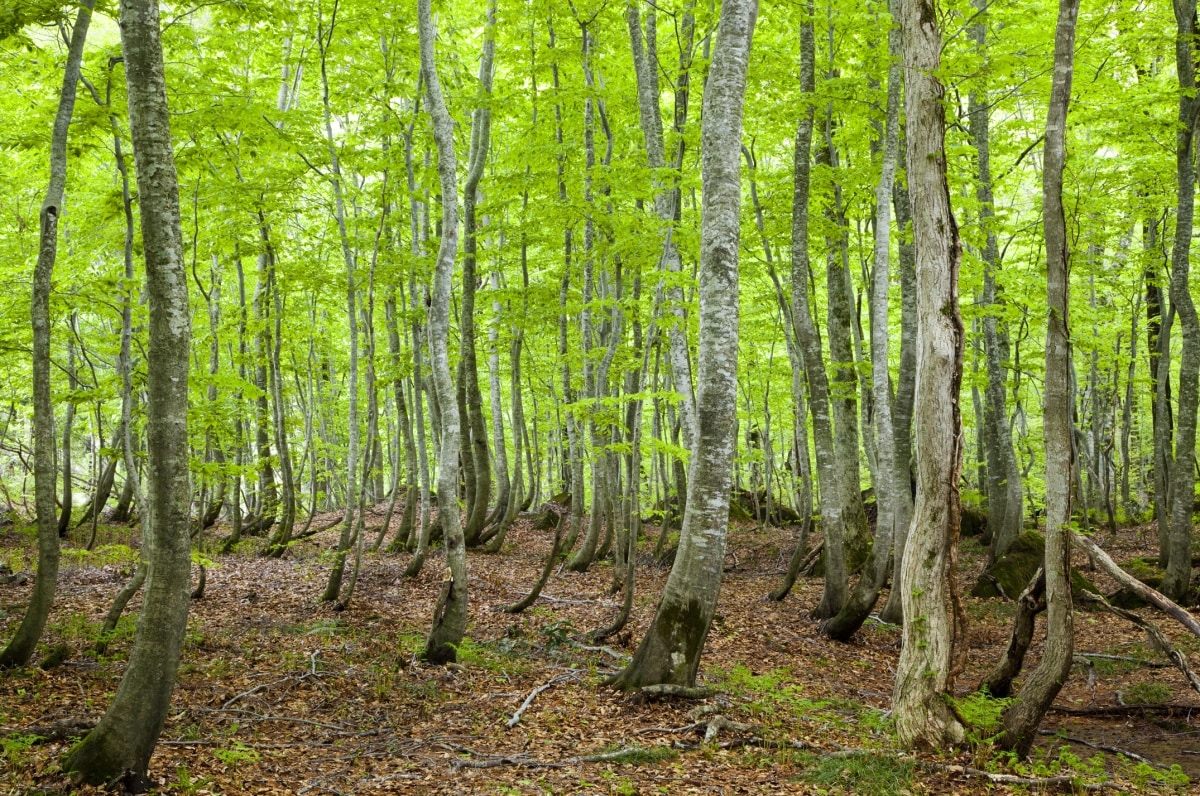The Oldest Beech Trees in Asia

Straddling the border between Aomori and Akita Prefectures, Shirakami-Sanchi was one of the first World Heritage Sites registered in Japan. Literally meaning "Mountain Land of the White Gods," the area encompasses an expanse of some three dozen mountains, within which can be found the largest stretch of pristine beech forest remaining in the world.
By Michael Kanert
Siebold’s beech trees once covered all the hills and mountains of northern Japan, but most of them were cut down during Japan’s years of rapid modernization. Conservation activities in Shirakami-Sanchi began in response to a proposed road through the heart of the forest in 1982. Following the discovery of the protected black woodpecker (kumagera) in 1983, construction was terminated in 1989. World Heritage status was bestowed in 1993, concurrent with the induction of Himeji Castle in Hyogo Prefecture, the Buddhist monuments of the Horyu-ji area in Nara, and the ancient forests of Yakushima in Kyushu.
https://www.youtube.com/watch?v=Aptg37dvsDM
Shirakami-Sanchi now holds the oldest beech trees in Asia, with some over two centuries old. 84 species of birds can also be found in the area, as well as mammals such as the Asian black bear and the Japanese serow (nihon kamoshika), which looks something like an antelope interbred with a wolverine.

Of the site’s 1,300 square kilometers (502 mi²), only a small central tract of 169.7 square kilometers (65.5 mi²) is recognized as a World Heritage Site. The biosphere here dates back some 8,000 years, having never been touched by human development, and is exemplary of a cool-temperate zone forest in the northern hemisphere.
https://www.youtube.com/watch?v=KZOLylOSiQQ
While permission from forest management is needed to enter the World Heritage area, casual tourists can still enjoy a collection of a dozen lakes and ponds, the best known of which is Ao Ike (Blue Pond), a compact pond of clear azure that reveals every fish, rock and fallen branch in its 9-meter (29.5 ft) depth. Visitors can get a taste of the beech forest by meandering through the buna shizen bayashi (natural beech grove) located nearby.



